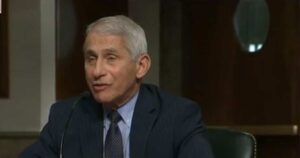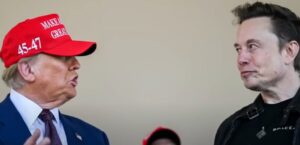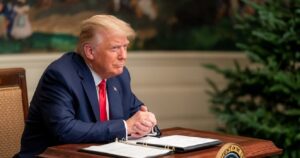Cooperative effort leads to major new law curbing online exploitation
President Donald Trump signed into law the Take It Down Act, a landmark piece of legislation designed to address the wide-reaching problem of sharing explicit content without consent, on Monday.
The Take It Down Act criminalizes the posting of intimate images without permission, including those created using artificial intelligence, and it requires quick content removal by social media companies.
The signing ceremony took place in the Rose Garden at the White House and was attended by key figures who played a role in the bill's creation and passage. The act received broad support across the political spectrum, underscoring the potential for bipartisan collaboration on critical issues.
Broad support
Spearheading the charge on the Senate floor were Senators Ted Cruz and Amy Klobuchar, who worked together to introduce the legislation earlier this year. Their efforts were backed by a unanimous approval in the Senate in February, followed by an overwhelming vote of 409-2 in the House of Representatives in April.
First Lady Melania Trump emerged as a vocal advocate for the bill, aligning its objectives with her broader commitment to ensuring youth safety online through her "Be Best" initiative. She spoke candidly about the need for robust digital safety measures for children and teenagers.
"This legislation is a powerful step forward in our efforts to ensure that every American, especially young people, can feel better protected," she stated, emphasizing the importance of safeguarding vulnerable communities from exploitation.
Voices of experience and advocacy
The event also spotlighted those who shared their personal stories to illustrate the devastating impact of nonconsensual image sharing. Victims like Elliston Berry and Francesca Mani viscerally conveyed the emotional and social fallout of these violations.
Berry described the "fear, shock, and disgust" she experienced upon realizing her intimate images were spread without her consent. Her story, like those of others, underscored the urgency and necessity of the new law.
Republican South Carolina state Rep. Brandon Guffey offered a heartfelt account of his personal loss, recounting the tragic suicide of his son, Gavin, following a sextortion incident. His narrative highlighted the severe consequences that can result from online exploitation.
AI and social media regulation
The Take It Down Act takes specific aim at the complex challenge posed by artificial intelligence in the creation of so-called "deepfake" images. These AI-generated visuals manipulate existing content to fabricate realistic, but false, representations of individuals.
To combat this, the law mandates that social media platforms remove reported content within 48 hours of notification, thereby holding technology companies accountable. Berry asserted the importance of this regulation, voicing the need to "hold big tech accountable" for addressing such abuses.
The penalties laid out by the law are substantial. Those found guilty of sharing nonconsensual images involving minors may face up to three years in prison, while similar offenses against adults warrant a two-year sentence.
Uniform federal standard
Before the Take It Down Act, nearly all U.S. states had their own laws regarding nonconsensual image distribution. The new federal legislation, however, provides a unified standard for prosecution and penalties across the country, simplifying the legal landscape for these offenses.
Notably, the act also includes provisions for threats involving these images, with prison terms of up to two and a half years for minors and one and a half years for adults.
First Lady Melania Trump further emphasized the role of education in combating these issues, acknowledging that while "teenagers might not know all the laws, they do know when something is wrong."
Path forward for bipartisanship
President Trump's remarks at the ceremony highlighted the cooperative spirit that led to the bill's passage. "We've shown that bipartisanship is possible," he declared, celebrating the achievement of working across party lines for a common goal.
The Take It Down Act stands as a testament to what can be accomplished when policymakers unite to tackle pressing issues. Its passage marks a significant step forward in the ongoing effort to create a safer digital environment.
As awareness of nonconsensual image distribution and AI abuses grows, the implications of the Take It Down Act will likely reverberate through both legal and technological fields, steering future discussions on internet safety and regulation.




